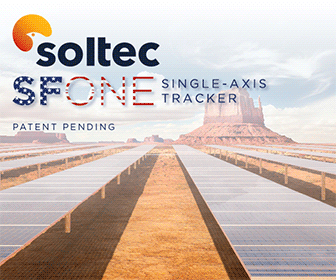New Converter and Wiring Setup Can Improve Photovoltaic Module Performance
Photovoltaic (PV) modules are usually connected by wires that run horizontally through individual arrays, carrying electricity through the solar energy system. As a result, the system is only as good as its weakest module-if one gets damaged or shaded, the whole system can stop generating electricity.
Solar startup eIQ Energy, developed a solution that leverages parallel wiring, which allows each module to operate independently. Parallel wiring is more complex, requiring thicker wire and more devices than the traditional horizontal-string arrangement, making it more costly. eIQ Energy developed a small device, the vBoost, which mounts directly onto the back of a PV module to boost power generation and enable parallel wiring at a lower cost.
Before electricity from a solar panel can be used, electricity must be changed from direct current (DC) to grid-compatible alternating current (AC). Power electronics devices, like inverters and converters, are used to adjust current and voltage. When PV modules with the vBoost converter generate electricity, current flows through the device where its DC voltage is increased to a higher DC voltage before being converted to AC with an inverter. This process boosts the overall efficiency of the solar system, increasing the amount of electricity it produces. At the same time, the parallel wiring enables higher voltages to travel along standard-size wires, helping to lower material costs.
The eIQ Energy team worked with the U.S. Department of Energy Solar Energy Technologies Office through the Small Business Innovation Research program in 2014 and 2015 to build and optimize the converter. The team simulated circuit operations and used thermal modeling to mimic the effect of heat on the vBoost's components, enabling them to alter the design to cool the converter. This also ensured that the vBoost could meet stringent safety standards.
In addition to boosting the performance of the module, the vBoost also incorporates communication capabilities to enhance solar system controls. The device can alert the system owner to problems, enable remote-control power output, and eliminate additional hardware typically required for remote shutdown.
YouSolar, a company that sells integrated solar-plus-battery systems in Emeryville, California, licensed the vBoost in 2016 for use in its systems. eIQ Energy is in discussions with two PV module manufacturers that can attach the device and encase the electronics in their factories, helping to speed field installation and reduce labor, material, and fabrication costs.
SETO | www.energy.gov










.gif?r=2806)
.jpg?r=6349)
.jpg?r=6757)